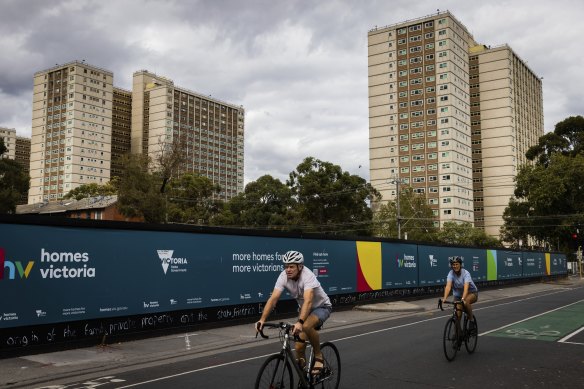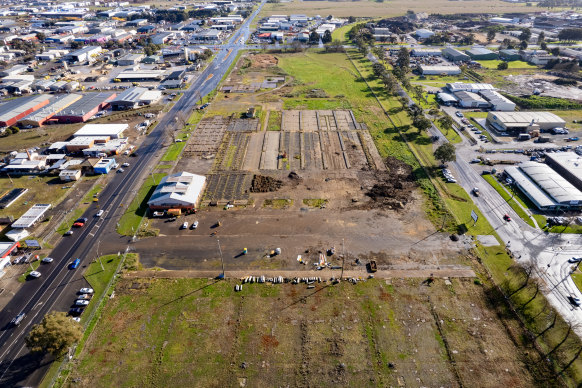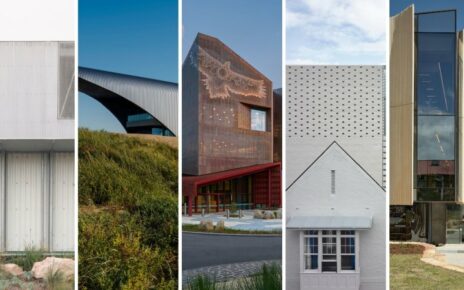Save articles for later
Add articles to your saved list and come back to them any time.
The decision to dump the Commonwealth Games came amid warnings that the workers, raw materials and government cash needed to deliver the 12-day event would come at the expense of efforts to tackle housing affordability.
But the move – which the state government has blamed on a massive cost blowout – won’t improve Victoria’s already stretched finances, according to a leading credit rating agency.
On Wednesday, Premier Daniel Andrews promised to redirect $1 billion of Games cash already factored into the budget bottom line into a regional housing fund to invest in 1300 permanent social affordable housing units in regional Victoria.
“Instead of waiting until the middle of 2026 to do it, we’re starting now,” Andrews said. “So there’ll be more [social and affordable houses] and it will arrive sooner than would otherwise have been the case,” he said.
“I think that’s a really important outcome. Housing is not just a metropolitan issue, it’s a regional issue as well.”
Another $1 billion will be spent on smaller initiatives to boost regional tourism, sport, business and infrastructure, including $550 million on new sporting facilities, but the state no longer has a hard March 2026 deadline to build it.
The Andrews government said it will spend $1 billion on social affordable housing units in the regions. Credit: Paul Jeffers
Moody’s analyst John Manning said cancelling the games would not improve Victoria’s budget position as it was still committed to spending $2 billion.
However, that spending would not necessarily deliver the same economic benefits that would have been generated by the Games, he said.
“The spending on social housing is going to provide an underlying benefit going forward,” Manning said. “The benefits of the stadiums in regional Victoria, it’s just unclear at this stage, what economic benefit that will provide.”
Federal government advisory body Infrastructure Australia in December warned that Victoria may need to postpone major infrastructure projects in light of labour shortages, rising material costs and limited construction industry capacity.
Cath Evans, the Property Council of Australia’s Victorian executive director, said the residential construction industry was also feeling that pressure as it battled for workers and materials against Big Build projects, such as the West Gate and Metro tunnels.
Evans said building Games infrastructure in Ballarat, Bendigo, Geelong and Morwell between now and 2026 would have sapped further resources from the housing market.
“There would have been increased pressure on the housing market to deliver supply as more construction resources were redeployed into the Commonwealth Games,” Evans said. “That would have been an inevitable outcome.”
Master Builders Victoria chief executive Michaela Lihou said the pre-Games building blitz would have further stressed the industry amid an ongoing labour and skill shortage. Ensuring supply of materials to the regions and uncertainty about what was going to be built were further challenges, she said.
“The timeframes to deliver these things was always going to be tight,” she said. “The fact that this will now be delivered over a longer time will take some of the pressure off the industry.”
Lihou welcomed the commitment to building 1300 new homes, which would provide security to the industry, but said it was the “tip of the iceberg” in terms of what would be required to address the housing crisis.
Andrews has said the estimated cost for hosting the Games ballooned from $2.6 billion to as high as $7 billion. Meanwhile, according to Treasury’s latest budget predictions, net debt will grow from about $135.4 billion next year to $171.4 billion by 2026-27.
Even after imposing $8.6 billion worth of new taxes over four years in the budget, net debt as a proportion of the state economy is expected to keep rising, hitting 24.5 per cent by mid-2027, compared with 20.6 per cent expected by the end of the current financial year.
Manning said it was unclear exactly how the cost of putting on the event had tripled since the May state budget and therefore difficult to know if other infrastructure projects were coming under similar cost pressure.
RMIT emeritus professor of public policy and the social economy David Hayward said the government should have slowed the pace of capital spending when it had the opportunity because of the inflationary pressures hitting the building sector.
Hayward, who pays close attention to the state’s financial position, said the idea of that Victoria should jeopardise its efforts to return the budget to surplus for a 12-day event was ludicrous.
Andrews said on Wednesday that regional towns would still benefit from updated infrastructure that would enable future sports and entertainment events.
A pool in Armstrong Creek in Geelong would not be built to competition grade, but an aquatic centre would still be delivered, he said.
Victoria has also paused work on the $13 billion Melbourne Airport Rail project and signalled it will kill the $4 billion Geelong fast rail project. The Albanese government is conducting a review of its own infrastructure commitments, which is due back in August.
RMIT’s Centre for Urban Research director Jago Dodson said it was sensible for Victoria to reassess its major infrastructure pipeline, but was doing so without a long-term transport plan to help it prioritise the most important projects.
The sale yards in Ballarat that were to be converted into accommodation for Commonwealth Games athletes before Victoria decided to no longer host the 2026 sporting event.Credit: Jason South
He said that meant Victoria remained steadfastly committed to the $34.5 billion Suburban Rail Loop East, while projects that some transport experts believe would be more beneficial – such as Airport Rail or a major investment in electric bus services – do not progress.
The Morning Edition newsletter is our guide to the day’s most important and interesting stories, analysis and insights. Sign up here.
Most Viewed in National
From our partners
Source: Read Full Article




